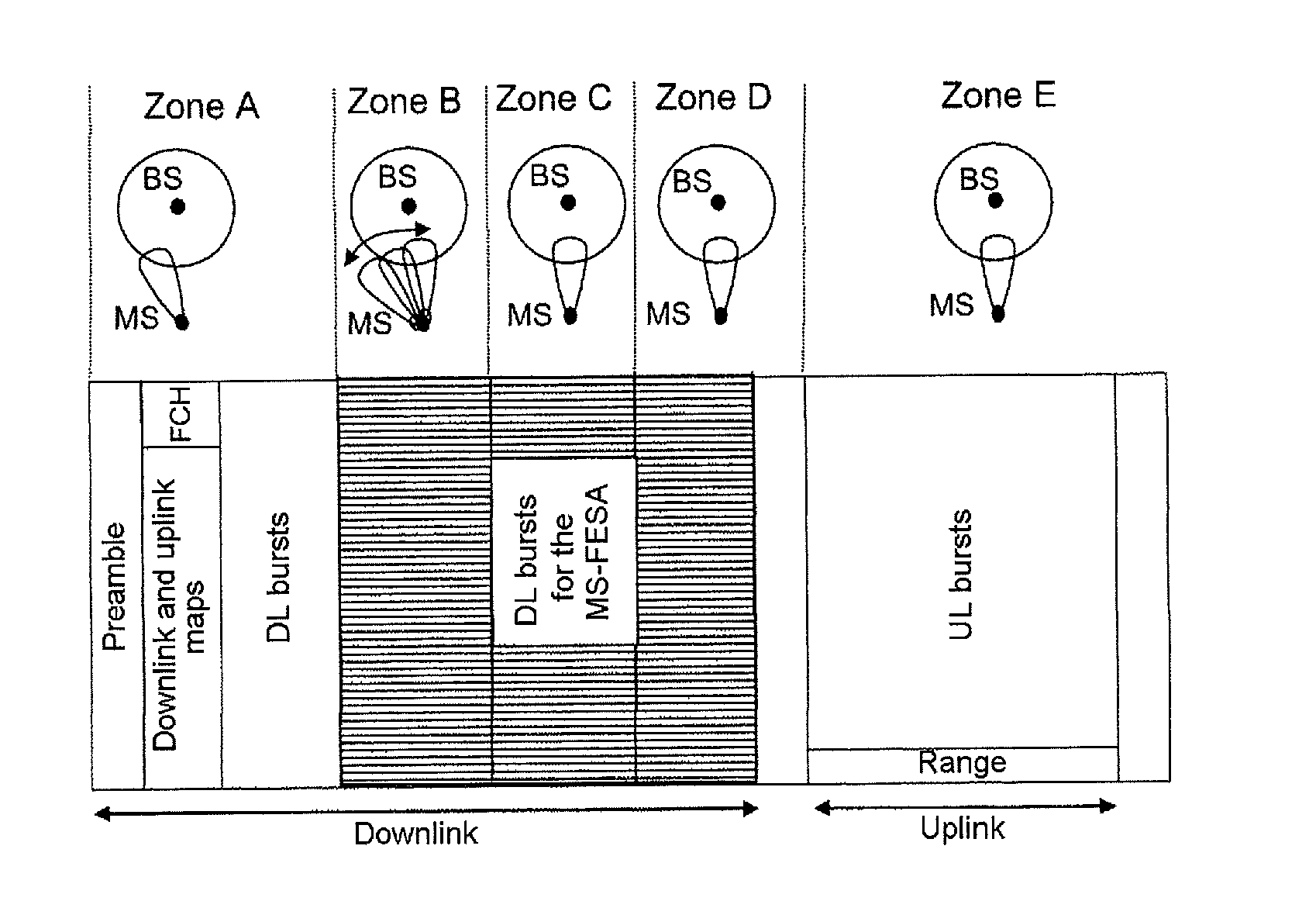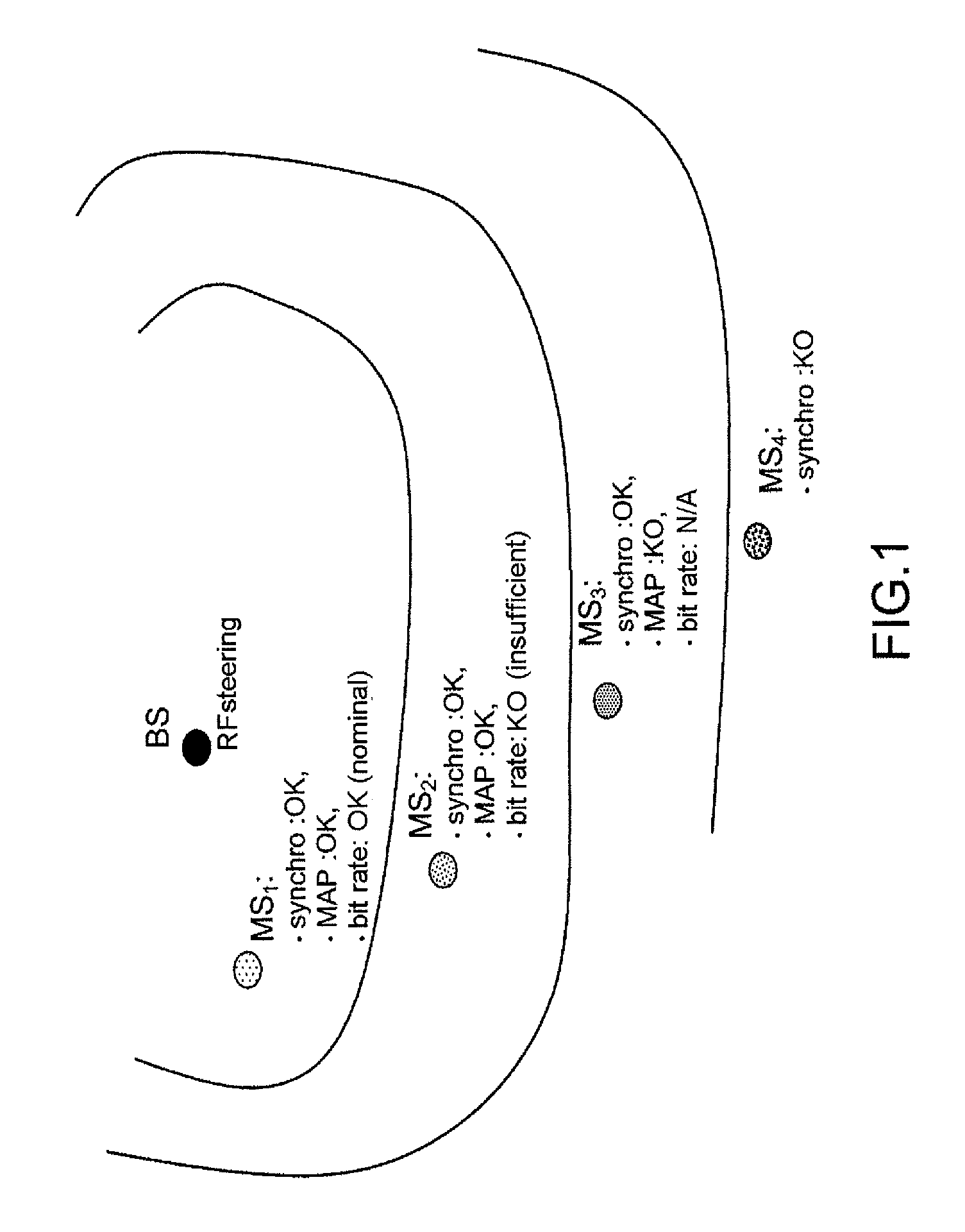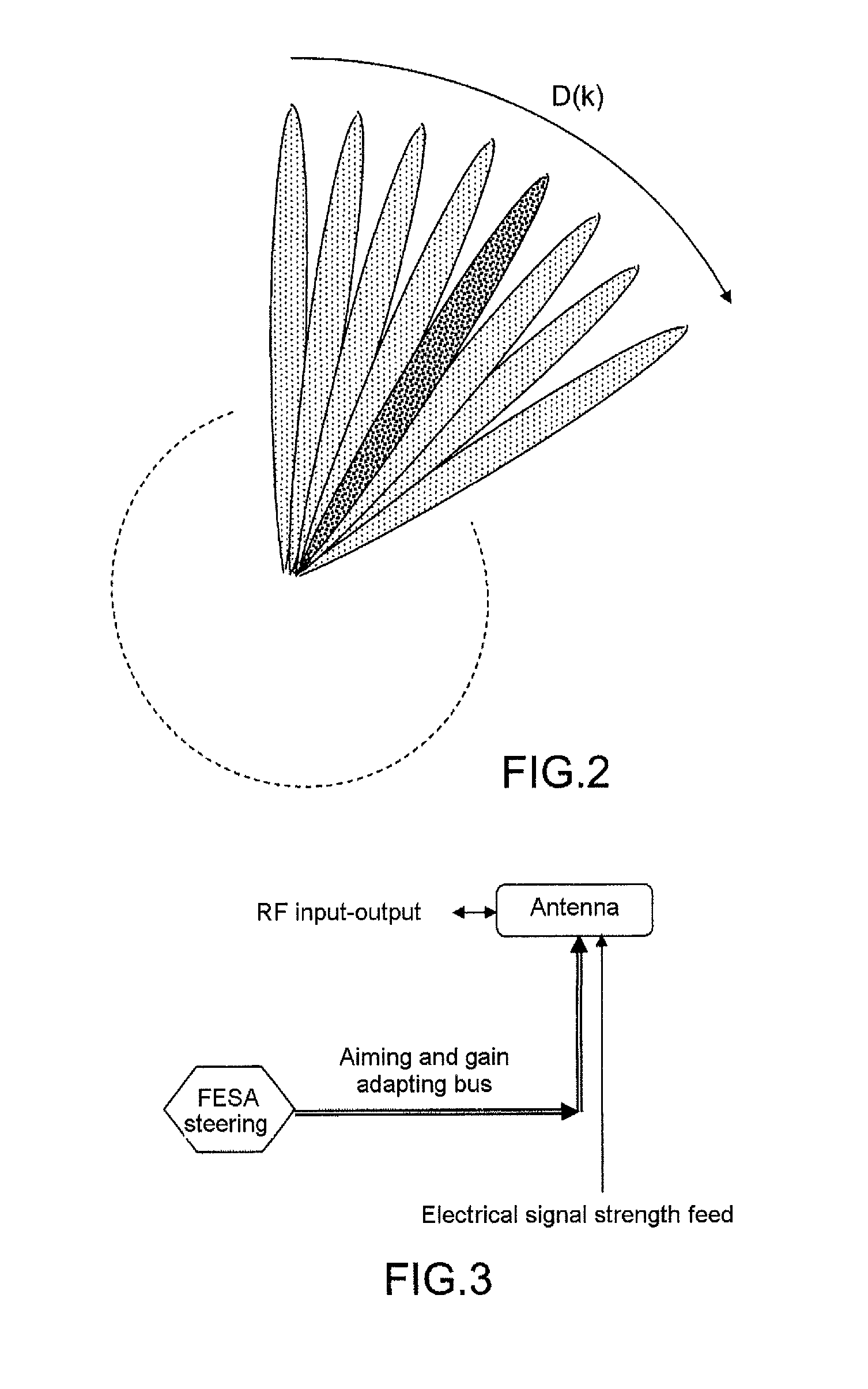Method for driving smart antennas in a communication network
a communication network and smart antenna technology, applied in the direction of frequency-division multiplex, instruments, synchronisation arrangement, etc., can solve the problems of expensive, static and expensive, antenna aiming is a costly and not very fast procedure, and the signal strength and bandwidth establish an upper limit at the capacity of a communication link
- Summary
- Abstract
- Description
- Claims
- Application Information
AI Technical Summary
Problems solved by technology
Method used
Image
Examples
example a
Received Power Optimization Criterion
[0123]The power criterion is the simplest to use (measuring the RSSI, standing for Received Signal Strength Indication). It is indirectly linked to the robustness of the communication.
[0124]The mobile station MS exploits times in the downlink subframe in which no burst is intended for it, that is to say that it receives no dedicated information from the base station, to measure the received signal strengths on the other directions of the beam from its FESA antenna. In practical terms, for several beam aiming angle values, it determines a received signal strength or energy, then it can calculate the average of all the signal strength values.
[0125]The calculations are, for example, carried out in the antenna aiming device situated in the upper Mac layer.
[0126]These measurements are valid in as much as the base station BS is transmitting at the measured instants, that is to say that the BS is interested in the other MSs. It delivers their respective...
example b
Combination of Signal Strength and Signal / Noise Ratio or SNR
[0131]The SNR value is an excellent criterion because it is directly linked to the demodulation capability. However, it assumes that the mobile station MS demodulates symbols. This therefore means that the WiMAX MS is modified to also demodulate symbols that are not intended for it, and do so in order to determine the SNR therefrom. The symbols acquired by the mobile station are decoded in order to retrieve the modulated data then determine the value of the signal-to-noise ratio by executing statistical methods known to those skilled in the art. This method can be longer than the previous one because it entails waiting for the duration of a symbol. This method can be coupled with the use of the channel coding statistics.
[0132]The algorithm-based procedure implemented can be as follows, by considering the aiming of the FESA antenna on the MS obtained on the preceding frame and the omnidirectional pattern on the antenna of th...
PUM
 Login to View More
Login to View More Abstract
Description
Claims
Application Information
 Login to View More
Login to View More - R&D
- Intellectual Property
- Life Sciences
- Materials
- Tech Scout
- Unparalleled Data Quality
- Higher Quality Content
- 60% Fewer Hallucinations
Browse by: Latest US Patents, China's latest patents, Technical Efficacy Thesaurus, Application Domain, Technology Topic, Popular Technical Reports.
© 2025 PatSnap. All rights reserved.Legal|Privacy policy|Modern Slavery Act Transparency Statement|Sitemap|About US| Contact US: help@patsnap.com



